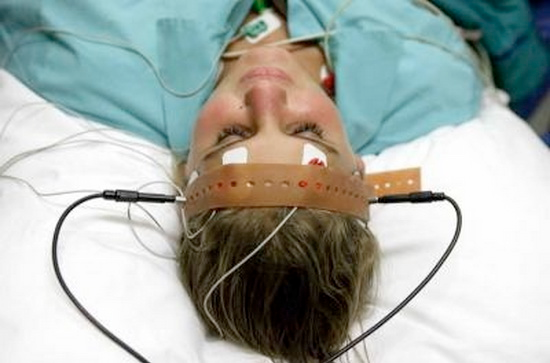
Electroconvulsive therapy, or ECT, has been used to jolt severely and persistently depressed patients from their disabling mood state for more than seven decades. And while the treatment is considered highly effective, psychiatrists andmental health researchers have long scratched their heads over the question of just how the practice works to banish crippling depression, sometimes after just a few sessions.
They are clueless no more. A new study sheds light for the first time on what ECT therapy does in the brain. And in so doing, researchers say they may have found a promising and more objective new way to diagnose depression — by looking for evidence of too much crosstalk among distinct networks that make up the brain.
In a report published Monday in the Proceedings of the National Academies of Science (PNAS), a group of researchers in Scotland used a brain scanner that watches the brain at work — called fMRI — to peer into the brains of nine severely depressed patients before and after they received electroconvulsive therapy.
A growing body of promising research had given the researchers some suspicions about what they’d see. In depression and several other psychiatric disorders, studies have begun to detect a pattern of “hyperconnectivity” between three widely scattered “networks” in the brain: the network of structures in which we process emotion and response to threats (“the affective network”); the network of structures that allows us to focus our attention, to reason and make higher-order judgments (“the cognitive control network”); and a cluster of regions that comes alive as a groupwhen our minds are at rest — brain structures that help us ponder the intentions and mental states of others, consider our personal experiences and assess our emotions (dubbed the “default mode network”).
 ECT has been a mainstay of treatment for severe depression since the 1930s, but the mechanism underlying its antidepressant effect has remained largely a mystery. Perrin and colleagues pointed out that solving the enigma could open the way to new, rationally-designed treatments that hit the same target less invasively and with fewer of ECT’s adverse effects.
ECT has been a mainstay of treatment for severe depression since the 1930s, but the mechanism underlying its antidepressant effect has remained largely a mystery. Perrin and colleagues pointed out that solving the enigma could open the way to new, rationally-designed treatments that hit the same target less invasively and with fewer of ECT’s adverse effects.
One of the surprises in the current study, the researchers indicated, was that ECT’s effect on functional connectivity within the brain was “restricted and lateralized,” focusing on the dorsolateral prefrontal cortex.
According to Health Pop, Dr. Ian Reid, professor of psychiatry at the University of Aberdeen in Scotland, posits that since the efficacy of ECT had been a mystery to scientists, now that there is concrete evidence of how the brain reacts to the treatment and what the patient expresses:
“ECT is a controversial treatment, and one prominent criticism has been that it is not understood how it works and what it does to the brain,” Reid said. “We believe we’ve solved a 70 year old therapeutic riddle because our study reveals that ECT affects the way different parts of the brain involved in depression connect with one another.”
Reid warned that despite its effectiveness, ECT should only be used for people who are severely depressed and in danger of taking their own life or if they haven’t responded to other treatments.






